|
Some interesting mollusc occurrences have been reported. A white-shelled Haliotis tuberculata (80mm shell length) was found by a Guernsey local, Jamie le Tissier whilst ormer gathering off Cobo, on 11th February. Richard Lord photographed the animal (Figure 1) At that time a Guernsey commercial fisherman reported landing three Eledone cirrhosa between 7 and 12 February. These were fished off Sark, off St Martin’s Point, Guernsey and on the Casquet banks to the west of Alderney. These successive catches were considered to be notable as this is a northern species fished commercially off Scotland. The southern species, Octopus vulgaris was a pest of Channel Island fisheries until it died out in the cold winter of 1962/3. During 2009 I was copied into e-correspondence concerning a distinctive form of Simnia patula, flagged by Keith Hiscock. Conventionally the species is associated with the soft coral, Alcyonium digitatum, commonly known as Dead Man’s Fingers, but individuals seen on Eunicella (sea fans) were noted to differ in being slender, and pinker in colour, similar to their host. In July 1977 Bernard Picton photographed the animal whilst diving off Lundy Island. This new form has been recognised by Felix Lorenz, an Ovulidae authority, as a new species, shortly to be named. A photo of the form has kindly been supplied by Jason Gregory (Figure 2). Seventeen members of this Society converged on Skye in September for a field meeting. The island has been well worked over recent years and it was pleasing to add a ‘showy’ dorid nudibranch to the island’s marine mollusc checklist. Julia Nunn found a mature individual of Geitodoris planata at Ardmore, an extensive biodiverse shore at the north end of the island. Terry Wimbleton advises that a living Crassostrea gigas was found on the shore on the west side of Hayling Bridge, Langstone Harbour. This record adds to the only other known locality in S15 which is along Southampton Water above the Hamble, found by Terry in 2008. This oyster is not being farmed in the area. In recent years a productive conduit of records has resulted from reciprocity with individuals and organisations e.g. divers, CEFAS. Georgia Conolly was photographing marine life underwater off Eastbourne, East Sussex, in August. In a photo of sea squirts attached to a sandstone reef, which she was reviewing on her computer, she noticed a nudibranch in the corner of her field of view. This unfamiliar sea slug was identified as Trapania maculata by Bernard Picton. There are only two previous records for the species (S16, S22). Another diver-photographed seaslug was identified by Bernard in September. Jan Davies took a photograph of a colourful sacoglossan attached to red algae on a kelp stipe in the shallow sublittoral at Hope Cove in Devon (Figure 3). The species, Hermaea variopicta, was first recorded in the 1970s and thought to be rare. The Conchological Society has had two other reports of the species although Bernard says that there have been a number of records recently. Trinchesia concinna (Alder & Hancock, 1843) is a species for which there are very few records. Unlike many related cuthonid species this nudibranch is rather drab which perhaps accounts for rare records. It was sighted and photographed at Eyemouth on the east coast by diver Jim Anderson, a regular contributor to my report, who kindly allows his photo to be reproduced here (Figure 4) Shore-based recorders are likely to have more luck finding the small aeolid, Aeolidiella alderi. This is a southern species which feeds on sea-anemones. A key feature for identification is the ‘ruff’ of closely packed, shorter white cerata immediately behind the rhinophores. Apart from Mulroy Bay in Ireland, all sites were in southern England, often the shores being slightly muddy and animals being found relatively high on the shore. In September last year, Ian Smith found an animal at low water mark near Church Island in the Menai Straits, Anglesey. This has been verified by Bernard Picton and Julia Nunn and is the first record for Wales. Aeolidiella alderi was also recorded from Jersey for the first time by Paul Chambers in 2009. It has been known from Guernsey and has almost certainly been overlooked, as several specimens came to light during the year. (Paul returned to Jersey permanently after twenty years living and working in the UK. He’d been an amateur conchologist since his teenage years but has only been compiling formal records of his Channel Island finds since 2006.) During 2009 the following were considered noteworthy finds. Leptochiton scabridus was found under a boulder fairly high on the shore at Grouville. The species had not been recorded from Jersey since 1898 (although recorded from Herm and Guernsey in 1975). Littorina littorea, is sometimes listed as rare or absent from the Channel Islands. This was found to be common on certain parts of the coast and abundant on Les Minquiers (an offshore reef). Mactra glauca, a species with which few members are likely to be familiar, remains common on Jersey’s south-east coast, where it is restricted to a small area. In August a second live population of these shells was discovered on Les Écréhous (an offshore reef). During a visit I made to Jersey to carry out some joint fieldwork, I found Tapes philippinarum living on the foreshore at La Rocque. It transpired that, while not formally recorded before, the Fisheries Department were aware of its presence in Jersey waters. It was introduced in the 1990s as part of a now defunct aquaculture experiment but would presently appear to be restricted to the island’s east coast. Paludinella littorina was first found living on Jersey in 1998. Until last year there had only been a handful of shell records for Truncatella subcylindrica in the Channel Islands. Both these tiny gastropods are found in interstitial habitats at the uppermost part of the intertidal zone and both receive conservation status. In April 2009 Paul Chambers discovered a small colony of T. subcylindrica and P. littorina on Jersey’s east coast. The site is known as Archirondel, and is close to Le Fliquet Bay, the site of the first Paludinella record for Jersey. In addition to these small rarities, the site supports established populations of other associated ‘crevice fauna’ molluscs: Myosotella denticulata, Leucophytia bidentata, Cingula trifasciata, Lasaea adansoni, Littorina saxatilis, Littorina obtusata and Melarhaphe neritoides. Building on this find Paul is currently searching elsewhere on the island, in potential upper shore crevice habitat for further sites. An image montage of molluscan crevice fauna species, Figure 5 compiled by Ben Rowson, is published with this report. Paludinella littorina is tiny (British specimens rarely exceed 2mm in height and 1.7mm in diameter) and care is needed not to confuse it with a juvenile littorinid. It receives protection under the Wildlife and Countryside Act and should not be collected without a licence. An up-to-date distribution map can be viewed on the NBN Gateway and I am convinced the species’ real distribution is wider than the maps suggest. How members can contribute to marine recording? During the year further records have been digitised and the database now contains some 115,000 records. Some 15,000 were added in the past year; at an average of 30 species per card this is equivalent to 500 recording cards. A minority of these were received in 2009 (<70 cards), most represent a backlog which is gradually being worked. If you access the NBN Gateway to look at grid maps of distributions for the Society’s marine database you will see maps of patchy coverage. This represents gaps arising from various constraints: there are sea area archives in my possession which are yet to be digitised, there are sea area archives yet to be obtained for data input and there are sea area archives for which we do not yet have agreement regarding conditions for wider dissemination. All these matters need to be resolved. In the meantime my suggestion is that apparent gaps in distributional data can be addressed by focusing fieldwork now on the stretches of the coast, for which there are Society records, but which are not readily available for digitisation. Whilst it is rewarding and fun at one level to return to known honeypots such as Skye, the Isles of Scilly, the Channel Islands and other favoured haunts to search for shells and record long species lists, visiting deserving shores for which we have so few records should be equally rewarding. A glance at the NBN maps based on Society records immediately pinpoints places where recording can make a positive contribution and I would urge members to record in these areas. I will aim to publish an article and map in Mollusc World which will describe some stretches of coast to target. Whilst we can try to organise Society field trips to some of those sites, informal arrangements made between groups of members to supplement the official programme are potentially a fruitful and enjoyable way of building up the Society’s database. Anyone wishing to have more specific suggestions for areas to work should ask me for details. I would like to thank those who have allowed use of photos to illustrate the report and all those regular contributors who submitted records with special mention this time for Paul Chambers, Richard Lord, Ian Smith, Steve Trewhella, Terry Wimbleton. I also thank Bernard Picton who promotes the Society’s marine recording scheme. |
|
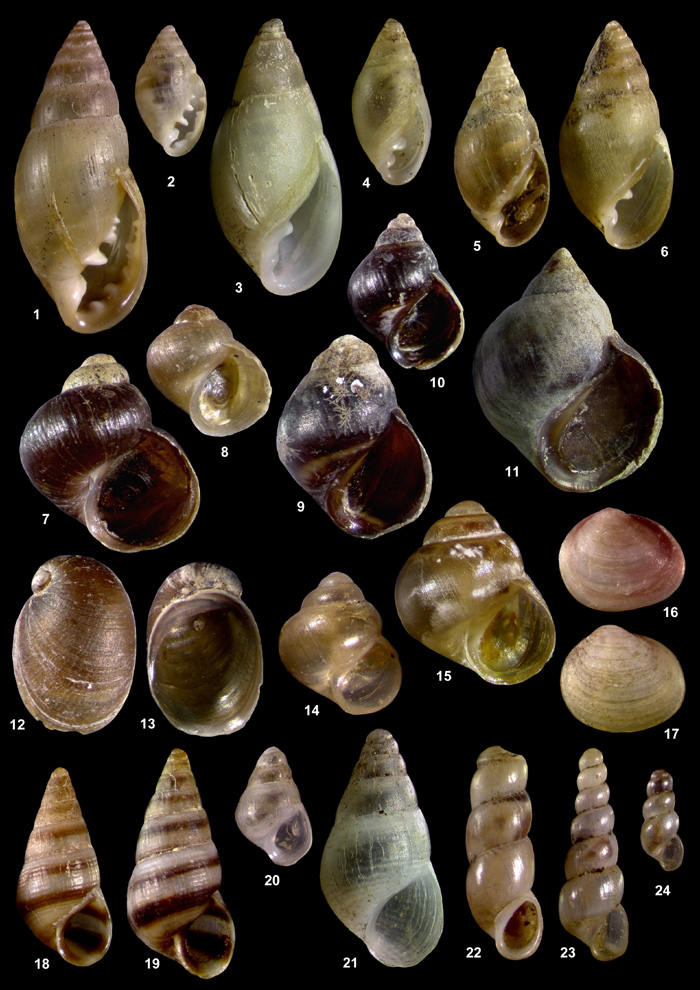
figure 5: crevice fauna molluscs of the upper shore compiled by Ben Rowson
- Myosotella denticulata adult
- Myosotella denticulata juvenile
- Leucophytia bidentata adult
- Leucophytia bidentata juvenile
- Myosotella myosotis semi-adult
- Myosotella myosotis adult
- Littorina saxatilis juvenile
- Littorina saxatilis juvenile
- Melarhaphe neritoides juvenile
- Melarhaphe neritoides juvenile
- Melarhaphe neritoides adult
- Otina ovata exterior
- Otina ovata interior
- Paludinella littorina juvenile
- Paludinella littorina adult
- Lasaea rubra typical form
- Lasaea rubra pale form
- Cingula cingillus adult
- Cingula cingillus adult
- Cingula cingillus white form juvenile
- Cingula cingillus white form adult
- Truncatella subcylindrica adult
- Truncatella subcylindrica semi-adult prior to truncation
- Truncatella subcylindrica juvenile
Images not to scale.

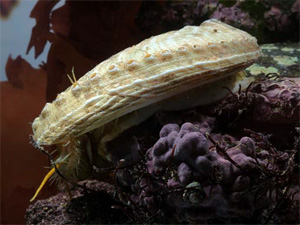 Figs. 1, A white ormer measuring 80mm in length (photographed by Richard Lord of Guernsey; ©RLLord,
Figs. 1, A white ormer measuring 80mm in length (photographed by Richard Lord of Guernsey; ©RLLord, 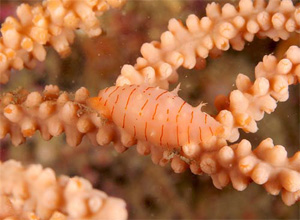 Fig. 2. The form of Simnia, believed to be a 2nd species, seen at The Manacles Reef, The Lizard. Photo by Jason Gregory
Fig. 2. The form of Simnia, believed to be a 2nd species, seen at The Manacles Reef, The Lizard. Photo by Jason Gregory 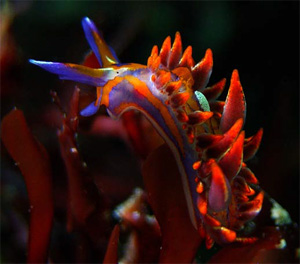 Fig. 3. Hermaea variopicta, observed off Hope Cove, Devon. Photo by Jan Davies
Fig. 3. Hermaea variopicta, observed off Hope Cove, Devon. Photo by Jan Davies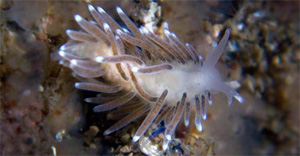 Fig. 4 Trinchesia concinna off Eyemouth, Scotland. Photo by Jim Anderson
Fig. 4 Trinchesia concinna off Eyemouth, Scotland. Photo by Jim Anderson